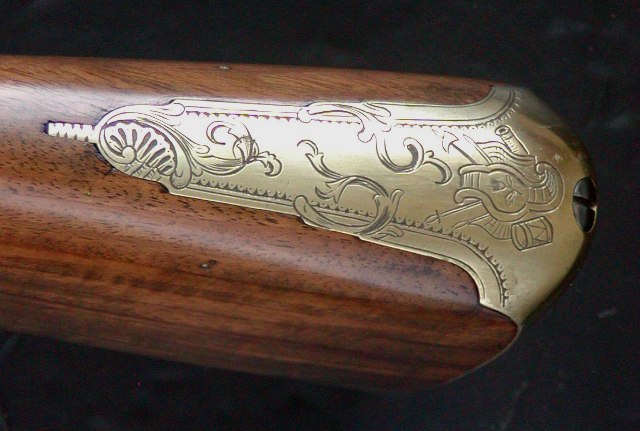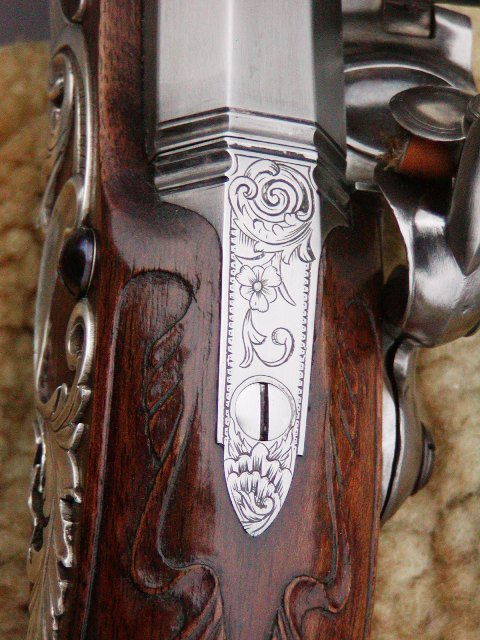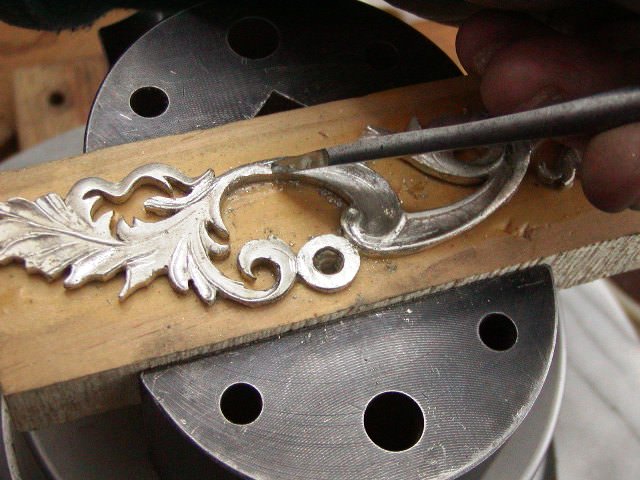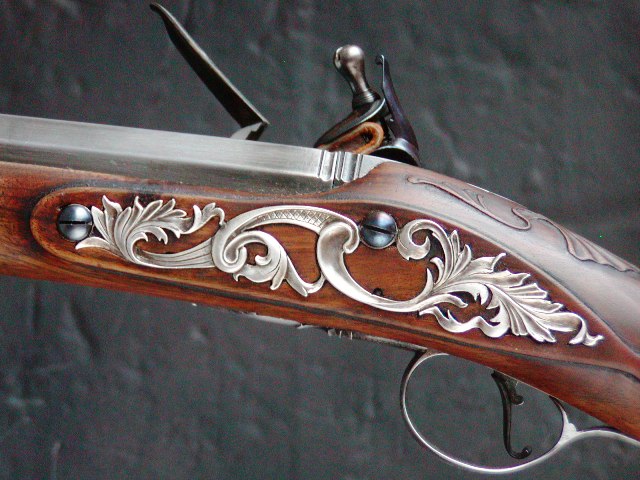I was going to pick up a graver or two with my next tow order. What gravers do yall use for borders on lock plates and butt plates and maybe a little scroll like you’d see on a low tier English trade fowler? Don’t worry I’m using practice plates not a gun  .
.
You are using an out of date browser. It may not display this or other websites correctly.
You should upgrade or use an alternative browser.
You should upgrade or use an alternative browser.
What gravers are typically used for English Fowler engraving?
- Thread starter Texcl2
- Start date

Help Support Muzzleloading Forum:
This site may earn a commission from merchant affiliate
links, including eBay, Amazon, and others.
- Joined
- Nov 26, 2005
- Messages
- 5,263
- Reaction score
- 11,126
Hi,
Don't buy any gravers from TOW. Go here (www.airgraver.com) and click on manual engraving. Read all about Lindsay sharpening templates and buy the stones and templates. For an 18th century English gun you need a small square, a small flat, and a round bottomed graver. If you use the search function on this site you will find many posts about engraving. If you don't learn to sharpen correctly, you will go nowhere and just ruin your guns. Lindsay's templates are the fool proof way to go.
dave
Don't buy any gravers from TOW. Go here (www.airgraver.com) and click on manual engraving. Read all about Lindsay sharpening templates and buy the stones and templates. For an 18th century English gun you need a small square, a small flat, and a round bottomed graver. If you use the search function on this site you will find many posts about engraving. If you don't learn to sharpen correctly, you will go nowhere and just ruin your guns. Lindsay's templates are the fool proof way to go.
dave
Awesome, thanks Dave.
As always sound advise from Dave.
Dave do you commission out any engraving work?
Dave do you commission out any engraving work?
- Joined
- Aug 25, 2003
- Messages
- 6,535
- Reaction score
- 1,515
Also, look up Sam Alfano. His work is some of the best and he is a good teacher for hammer and chisel work and push engraving.Awesome, thanks Dave.
- Joined
- Aug 25, 2003
- Messages
- 6,535
- Reaction score
- 1,515
Hi Dave. Just curious, what do you do with a round graver. I have never used one but then I was much an amateur at the skill.Hi,
Don't buy any gravers from TOW. Go here (www.airgraver.com) and click on manual engraving. Read all about Lindsay sharpening templates and buy the stones and templates. For an 18th century English gun you need a small square, a small flat, and a round bottomed graver. If you use the search function on this site you will find many posts about engraving. If you don't learn to sharpen correctly, you will go nowhere and just ruin your guns. Lindsay's templates are the fool proof way to go.
dave
Cruzatte
50 Cal.
I book marked your response, Dave. Thanks ever.
- Joined
- Nov 26, 2005
- Messages
- 5,263
- Reaction score
- 11,126
Hi Wick,
Here are two examples I did copied from original English guns.


The deep cuts that create shading and depth in the volutes and leaves are done with the round bottomed cutter. English engravers often combined a bunch of converging lines with round bottomed cuts to bring depth and shading detail to their work. I also use them when sculpting metal such as this side plate.


dave
Here are two examples I did copied from original English guns.


The deep cuts that create shading and depth in the volutes and leaves are done with the round bottomed cutter. English engravers often combined a bunch of converging lines with round bottomed cuts to bring depth and shading detail to their work. I also use them when sculpting metal such as this side plate.


dave
Last edited:
- Joined
- Nov 26, 2005
- Messages
- 5,263
- Reaction score
- 11,126
Hi,As always sound advise from Dave.
Dave do you commission out any engraving work?
Unfortunately no. I just don't have the time to add that to my work load. I do occasionally engrave regimental markings on muskets for reenactors but just a few each year.
dave
Amazing work Dave!
sportster73hp
50 Cal.
- Joined
- Jan 16, 2020
- Messages
- 1,076
- Reaction score
- 854
I am no artist so looking at others work amazes me. I can work wood , manipulate steel and shape bondo. Coming up with the design just isn't easy for me. To copy someone else’s work is my only default.
Cruzatte
50 Cal.
That's how the early craftsmen learned their craft. Study illustrations in books. on the web, wherever you may find them. Some engraving looks, quite frankly, a little cartoonish to me. And that was done on trade guns. Best wishes.I am no artist so looking at others work amazes me. I can work wood , manipulate steel and shape bondo. Coming up with the design just isn't easy for me. To copy someone else’s work is my only default.
- Joined
- Jul 8, 2011
- Messages
- 109
- Reaction score
- 182
I second Dave’s advice on the Lindsay sharpening system. It is a very versatile system. You can use it to sharpen a traditional point instead of his patented parallel heel by not grinding the bottom facets, as well as changing the face angle by adjusting the graver length sticking out of the jig. It will all make sense when you get further down the wormhole in your study….I also bought Sam Alfano’s hammer and chisel digital video on www.masterengraver.tv. He goes over traditional square graver sharpening and cuts. Very helpful. I used a square graver and a flat for nick and dot on my first gun engraving, I am pretty happy with the results, but adding the round graver as Dave said will help to get the English look on those deep scooping cuts.




Similar threads
- Replies
- 18
- Views
- 1K
- Replies
- 22
- Views
- 3K
- Replies
- 119
- Views
- 9K
- Locked
- Replies
- 13
- Views
- 2K



